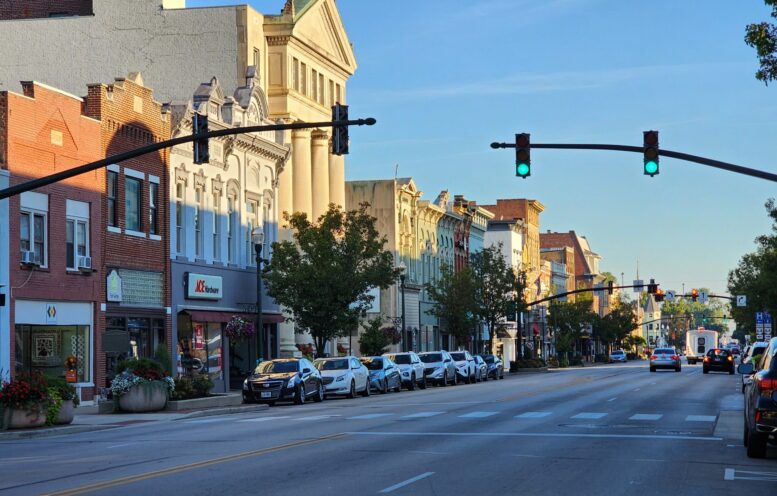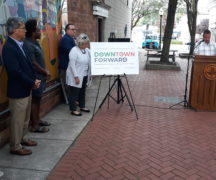By JAN LARSON McLAUGHLIN
BG Independent News
A study of Bowling Green’s downtown shows it could be improved with beautification of its alleys, addition of public art projects, and installation of better signage.
Community feedback sessions last year showed that residents care about their downtown. They care about accessibility, aesthetics and physical appearance of the downtown, connections to BGSU, downtown living and residential properties, events and entertainment including festivals, plus restaurants, retail and services.
“Overall, residents are very happy with downtown Bowling Green,” said Melissa Hopfer, project manager from BGSU’s Center for Regional Development. “It has a lot to offer.”
Hopfer presented the findings of the Downtown Forward project on Monday evening to Bowling Green City Council.
“Rural communities are facing challenges with workforce talent attraction and retention,” Hopfer said. And vibrant downtowns can make a difference.
“We recognize our downtown area is one of our most important community assets,” Mayor Mike Aspacher said.
The project was dubbed “Downtown Forward,” with a focus on respecting the city’s heritage and reimagining its future, Aspacher said. The ultimate goal is to attract and retain people in Bowling Green.
Over 14 months the Downtown Forward project looked at what Bowling Green’s citizens and stakeholders want in their downtown. Two community feedback sessions were held, focus groups met, and a community survey was released.
The process created a Pedestrian Experience Plan that identifies potential improvements to create a more pedestrian-friendly and energized environment in the downtown.
The plan focuses on three areas of improvement:
- Alley beautification projects, considering projects in Defiance and in Chattanooga, Tennessee.
- Public art projects, studying concepts adopted in Gahanna and Xenia, Ohio.
- Signage/Wayfinding, looking at ideas from Sandusky and Kent, Ohio.
And the mayor believes that is just the start of improvements in the downtown.
“It’s my belief this is just a beginning. This plan creates some actionable items,” he said. “I don’t want it to go on a shelf and just gather dust.”
The focus groups gathered input from BGSU scholars, BGHS students, downtown business owners, downtown property owners, Rotary Club, Aktion Club, BGSU Undergraduate Student Senate, and downtown residents.
The community survey received 1,092 responses.
The study was conducted with the help of BGSU, with Bowling Green being selected to participate in the Reimagining Rural Regions (R3) program with BGSU’s Center for Regional Development.
Graduate and undergraduate students were tasked with conducting community surveys and public forums to get input on the downtown.
The Downtown Forward Committee is led by Dick Newlove. Other members of the committee are: Mark Cassin, State Bank; Kati Thompson, BG Economic Development director and downtown business owner; Tim Emmerich, downtown property and business owner; Earlene Kilpatrick, retired SID and chamber director; Trevor Jessee, Civista Bank and member of board of public utilities; Chris Mowan, architect and member of city’s Historic Preservation Commission; Mark Remeis, real estate broker, downtown property owner and member of Planning Commission; Kate Sommerfeld, BG resident and VP of Community Relations at ProMedica; Amy Craft Ahrens, downtown business owner; Nate Spitler, attorney; Libby Barnett, BG High School student; Catherine Krempasky, BGSU student.
The BGSU R3 program, launched in 2021, is an economic and workforce development- centered placemaking initiative that helps communities identify, enhance and build community assets to aid in talent attraction and retention.
The program provides the capacity to communities to conduct public engagement to develop placemaking plans. Additionally, BGSU graduate and undergraduate students work with each community to help plan and implement projects to enhance and build more livable spaces.
The project talks about “placemaking,” which can be defined as the planning, urban design and management of public spaces. It maximizes a local community’s assets, inspiration, and potential, with the intention of creating public spaces that promote people’s health, happiness, and well being. The goal is transforming places to live.



